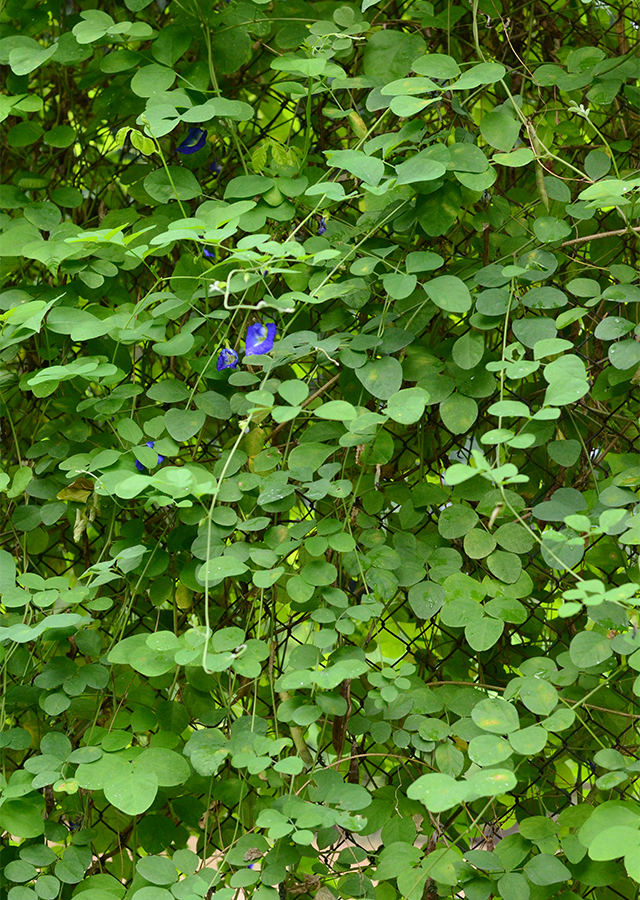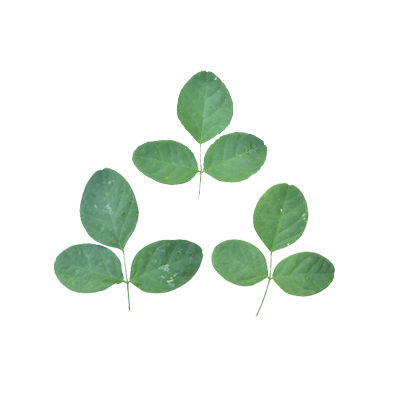Butterfly Pea
Clitoria ternatea L.
Fabaceae
Location in our garden
Principal



Synonym
Clitoria albiflora Mattei
Clitoria bracteata Poir.
Clitoria mearnsii De Wild.
Habitus
Climbers. Fast-growing climbing perennial, leguminous herb, up to 3 m long vines
Part Used
Leaves
Seeds
Flowers
Roots
Growing Requirements
Full Sunshine
Habitat
Riverbanks
Forest
Shrublands
Grassland
Overview
Extensive naturalization obscures the true origin of the species; it is likely that it originated from South America. There are many health advantages to this herb. It is harvested as a meal, medicine and dye from the wild. It has also been cultivated in plantations for a long time, as an ornamental for its showy flowering display and as a soil improver.
Vernacular Names
Bunga Biru (Malay), Aparajita (India), Choumame (Japanese), Die Dou (Chinese), Honte (French), Blaue Klitorie (Germany), Ang chan (Thai), Dau biec (Vietnamese), Telang tree (Indonesia)
Agroecology
At low and medium altitudes, the plant grows on most soil types. With a broad pH range from 4.5 to 8.9, it is adaptable to a wide range of soil types. It thrives in areas with average annual rainfall of 700-1,500 mm, but can survive in areas with dry periods. It tolerates flooding in the short run. It is tolerant of light frost and temperatures between 15 °C and 35 °C are tolerated. Full sun is favored, but partial shade is accepted.
Morphology
- Stems - thin, glabrous or sparsely pubescent, climbing or twining, 2–5 m long.
- Leaves - imparipinnate, arranged in 2-3 pairs, bright green, petiolate (length 1.5-3 cm), elliptic-ovate to elliptic lanceolate leaflets, width 1.5-5 cm by 0.4-3 cm, acute or notched apex and rounded base, whole margin.
- Flowers - Axillary inflorescence with many flowers on 4-9 mm long pedicels and with persistent, ovate bracteoles. At the inner base, it is funnel-shaped, 5 cm long, light to deep blue, mauve or white and yellow.
- Fruits - pods flattish, linear-oblong, 6–12 cm long by 0.6–1.2 cm wide, beaked.
- Seeds - with 4–8 flat, rounded, olive-brown to black seeds.
Cultivation
Propagated by seeds. The seed is normally sown from the beginning until the middle of the wet season in well-prepared seed-beds with seed placement 1.5 - 4 cm deep and lightly covered.
Chemical Constituents
Fenol, delphirridin, triglucoside, alkaloid, flavonoid, flavonol, kaempferol, quercetin, Myricetin 3-neohesperidosides, 3-rutinosides, 3- glucosides, saponin, sulfur.
Traditional Medicinal Uses
- In general, plants are used for kidney defense.
- The flower has antioxidant, antimicrobial, and insecticidal activities.
- The seeds are considered aperient, have immunomodulatory properties that are antimicrobial, insecticidal, antihyperlipidaemic. It is used to treat wounds and prevent nutrient absorption (antinutrient).
- Leaves have been shown to protect the liver with antioxidants, antidiabetics and antifungals.
- The roots have been cathartic. Root has functions that are antiinflammatory, antiasthmatic, immunomodulatory. It is used for the treatment of high levels of body fat, central nervous system fat, wound healing and fever reduction.
- It has been used as a nootropic, antistress, anxiolytic, antidepressant, anticonvulsant, tranquilizing and sedative agent for memory enhancer.
- To treat oedema, psychiatric illness, goitre, vitiligo, snake poisoning, toothache, eye disease, fever, asthma, jaundice, earaches, masses, throat infections, skin diseases (boils and scabies), renal stones and filariasis, and often used as an aphrodisiac, the root, leaves and flowers are used in the form of powder and decoction.
- The leaves are used as poultices in Indonesia, and white-flower juice has been used for inflamed eyes.
- In Thailand, for hair growth, flowers are used as a hair tonic.
Part Used
Reference Sources
Lijon, Md. B., Meghla, N.S., Jahedi, E., Rahman, Md. A., Hossain, I. 2017. Phytochemistry and pharmacological activities of Clitoria ternatea. International Journal of Natural and Social Sciences, 4(1): 1-10.


